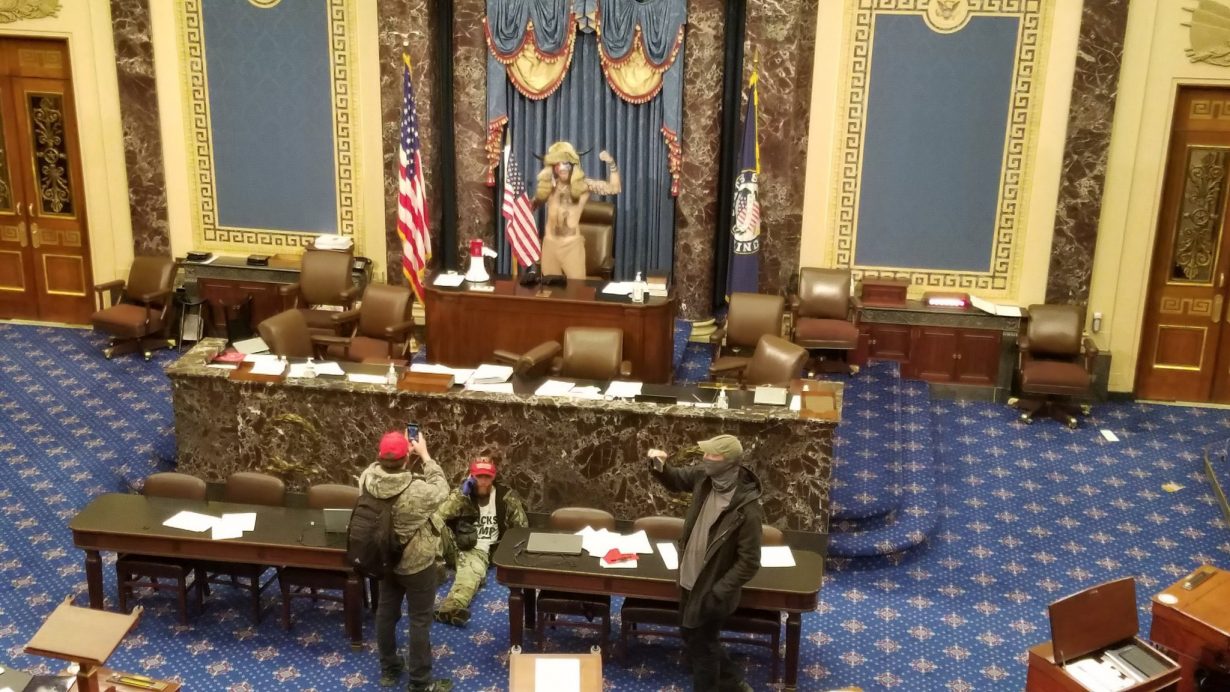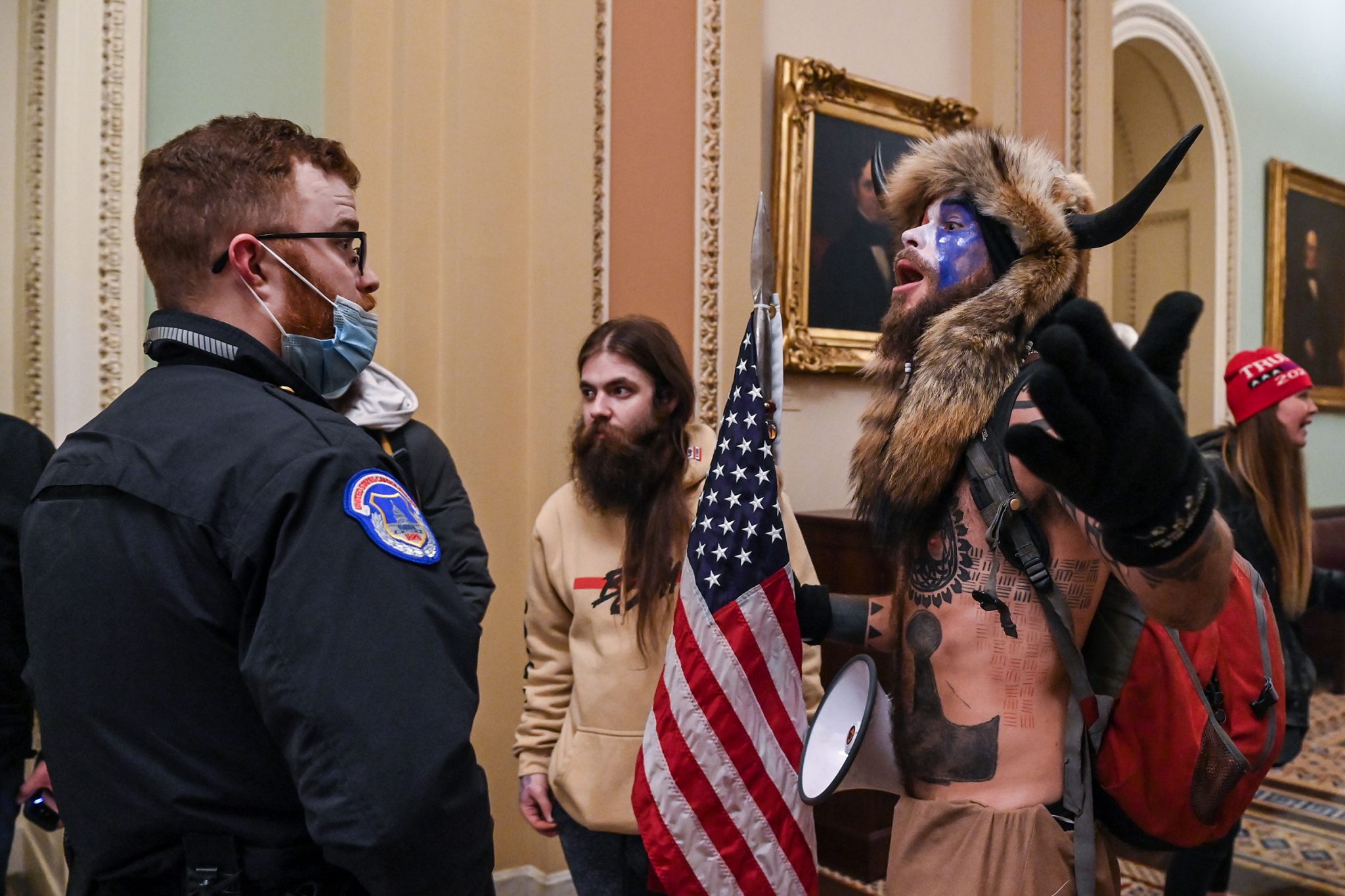As absurd as they look, the images from the US Capitol are destined to be venerated in the most disaffected corners of the internet for decades to come
Wednesday’s clownish desecration of American democracy was a tragedy in two acts. There was the carnivalesque mob baying for blood within the Capitol; and then there was the rapid-fire stream of images uploaded to social media, beamed directly into the eyes of aghast, captivated remote witnesses. Every conceivable angle of the chaos was covered, either by the trigger-happy rioters snapping obliviously on their smartphones (seemingly unfazed by the potential consequences of their actions), or by the media scrum that documented the cosplay coup in real time. It was Hieronymus Bosch’s The Garden of Earthly Delights, restaged as an orgy of near-cosmic stupidity.

Despite the conviction of some participants that they were genuinely instigating revolution, they appeared keener on devising a series of photo opportunities (what the internet theorist Nathan Jurgenson might describe as the ‘social photo’). In one, the tattooed, topless QAnon ‘shaman’ Jack Angeli flexed his biceps in the Senate Chamber while wearing what appeared to be a horned spin on Native American headdress – a theatrical call-back to the politics of the frontier. In another, a bearded boomer nested in the House Speaker’s office, posing with his feet on the desk. That particular shot captured an unmistakably infantile energy; perhaps, he might have reasoned, the hollow iconography of a power-grab would suffice. These pictures feel in tune with Jurgenson’s argument that the social photo is a ‘unit of communication’ rather than a stand-alone media object; the extremist mob constructed visuals to not just remember the event, but to talk to one another about it – now and in the future.

Whether or not these fever-dream images show the actual point of insurrection or are, more likely, the inevitable byproduct of twenty-first century-rioters armed with smartphones and social-media accounts, their power shouldn’t be underestimated. These pictures will now constitute a powerful folklore for a whole subculture of whacked-out, anti-establishment far-righters, the latest chapter in alt-right visual storytelling which includes the equally absurd Pepe The Frog. There’s a self-aware, almost playful quality to both their mise-en-scène and, dare I say it, costume design: the sinister all-too-real actors flanked by the gaudy excess of the Capitol’s interiors; confederate flags paraded through the portrait-lined halls. As deranged as they are, these are images imbued with as much of a sense of mythos as the history paintings which hover in the background – new symbols of a temporary reclamation of power, destined to be venerated in the most depressing and disaffected corners of the internet for decades to come.
In its most surreal moments, the riot felt like the unhinged conspiracies of QAnon had leapt from brain-rot message boards into real life. One of its most widely-shared images – a flag-carrying posse confronting police and photographers – features a cornucopia of symbols for would-be truth-seekers to decode. On the chest of the horned and face-painted ringleader is a tattoo of the Viking tree of life, a culture viewed by white supremacists as a beacon of hyper-masculinity and racial purity. To his right, another white face, another beard; this time a tattoo of a symbol from the cult video game series Dishonored (2012), what’s referred to as the ‘Outsider’s Mark’. The game is ostensibly about defeating a fascist government but the term ‘outsider’ is instructive; pushed underground, these symbols act as visual signifiers for neo-fascists to recognise one another by; now, of course, many more will be able to do so.

Each of these stupidities gives the entire sorry exercise (in which five people needlessly lost their lives) the flavour of a role-playing fantasy. On the one hand, this was a moment predicated on the entirely make-believe fiction of electoral fraud; on the other, perhaps the risks felt akin to an online video game. The most immersive way to experience it was via chaotic first-person broadcasts on Twitch, one of which came courtesy of noted neo-Nazi Baked Alaska (real name Tim Gionet). These streams took viewers into the dystopian, disorientating heart of the riot, continually interrupted by moments of preening, staged nonsense. (At one point, Gionet turned to the camera in Nancy Pelosi’s office and posed with a telephone.) The assault was daft, dangerous stuff; but in its virality, a depressingly effective piece of brand-building. Whether those involved, and those who urged them on, will ever face genuine repercussions, or merely profit from another bump in radicalised followers, remains to be seen.
